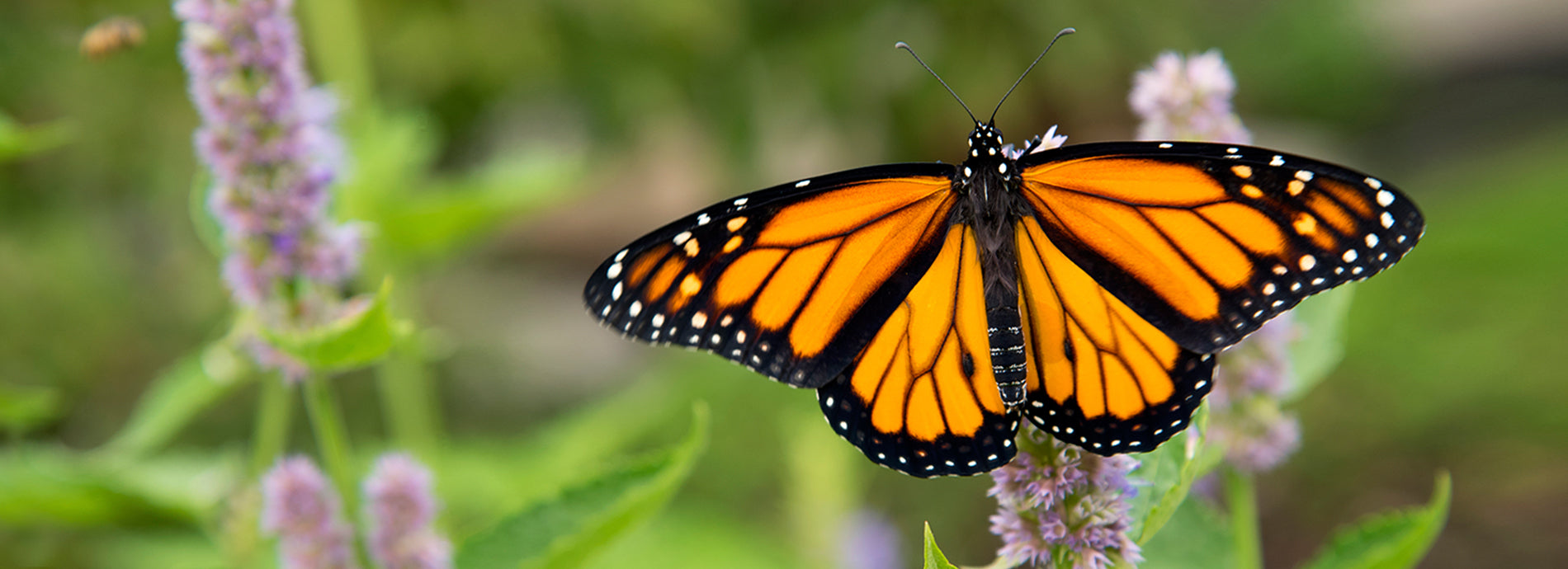You are about to leave the Herb Pharm website. The website will open in a new browser window.
Please select "OK" to continue to the website, or close this box to return to Herb-Pharm.com.

Growing Herbs at HomeFeb 2, 2022
On hot summer afternoons, orange-black monarch butterflies (Danaus plexippus) often fly amid our rows of pink Echinacea flowers (Echinacea purpurea). Our farms are ecosystems, and the butterflies play an important role. Like bees, birds and other pollinators, they support our plants’ reproduction.
The health of our herbs depends on the health of their ecosystem. So on our Certified Organic farms, we do what we can to support our pollinators. That’s why we’ve become an official Monarch Butterfly Waystation by growing Milkweed and other plants that provide habitat. We also raise butterflies from eggs, releasing them in time for their annual migration.
Unfortunately, monarch populations are under threat nationwide. Their numbers have declined by more than 80 percent since the mid-1990s.1 Much of this drop is due to pressures of habitat loss and the use of pesticides. These issues are exacerbated by their famous migration, which exposes them to differing conditions and threats across their continent-long path.
The monarch butterfly migration is one of North America’s greatest natural wonders. Each year, millions of butterflies leave from the northern United States and Canada and fly south to overwinter in warmer climates of central Mexico and southern California.2 Some fly as far as 3,000 miles on their journey. Then as the weather warms, the population migrates back to the north.
By May, that journey takes many monarchs to our corner of southern Oregon. There, they find the various plant species we grow just for them. Monarch butterflies will only lay their eggs on Milkweed. About the size of a pin head, the eggs are ridged, light cream in color and dome-shaped.3
In the wild, the percentage of monarch eggs that survive to become adult butterflies is often less than 10 percent.4 In captivity, we can get the survival rate over 90 percent.
Led by Mavis, our Quality Assurance Technician, we collect monarch eggs by hand. Then we gently place the egg on a moist Milkweed leaf in an unsealed container.
Three to four days later, that egg hatches and a larva emerges. The caterpillars then spend up to two weeks eating as much as they can.5
The caterpillar will eat the entire original leaf, so we keep adding more. Eventually, it grows to the point that we change its container. We place the larva on either a potted Milkweed plant or a bouquet of leaves inside a screened cage.
As the larva grow and eat plants, they get ready for their next stage in development. They crawl to the upper portion of the plant or the cage and make a silk pad. Then they hang from the pad in the shape of the letter "J." After a day, the larva sheds its outer skin and becomes a pupa, or chrysalis. The pupae are a vibrant green color with gold dots. They stay in this state for 10 to 14 days.6
At the end of this stage, the pupae change color from green to black. This is our signal that the butterfly is almost ready to emerge. Within a day, the adult monarchs eclose (the technical term for hatch).
Once they’ve eclosed, we place a small tag on the bottom of the left wing. This tag helps researchers better understand the migratory patterns of western monarch populations. Then we take the container outside and release the adult butterflies into the wild.
Last summer, we raised and released 138 butterflies. While most of them head north following the warming weather, those that eclose at the end of the season head back south. Butterflies born on our farms have been sighted more than 700 miles away in southern California.
If you want to help the monarch butterflies in your area, you can create a Monarch Butterfly Waystation in your own garden. Visit MonarchWatch.org to learn more.
Don't forget! Check your Rewards account for coupons.
CHECKOUTYou are about to leave the Herb Pharm website. The American Association of Naturopathic Physicians website will open in a new browser window.
Please select "OK" to continue to the American Association of Naturopathic Physicians website, or close this box to return to Herb-Pharm.com.
You are about to leave the Herb Pharm website. The website will open in a new browser window.
Please select "OK" to continue to the website, or close this box to return to Herb-Pharm.com.